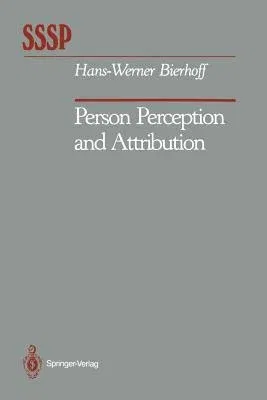Hans-Werner Bierhoff
(Author)Person Perception and Attribution (Softcover Reprint of the Original 1st 1989)Paperback - Softcover Reprint of the Original 1st 1989, 23 December 2011

Qty
1
Turbo
Ships in 2 - 3 days
In Stock
Free Delivery
Cash on Delivery
15 Days
Free Returns
Secure Checkout
Part of Series
Springer Social Psychology
Part of Series
Springer Series in Social Psychology
Print Length
313 pages
Language
English
Publisher
Springer
Date Published
23 Dec 2011
ISBN-10
3642741320
ISBN-13
9783642741326
Description
Product Details
Author:
Book Edition:
Softcover Reprint of the Original 1st 1989
Book Format:
Paperback
Country of Origin:
NL
Date Published:
23 December 2011
Dimensions:
23.39 x
15.6 x
1.75 cm
ISBN-10:
3642741320
ISBN-13:
9783642741326
Language:
English
Location:
Berlin, Heidelberg
Pages:
313
Publisher:
Weight:
467.2 gm

